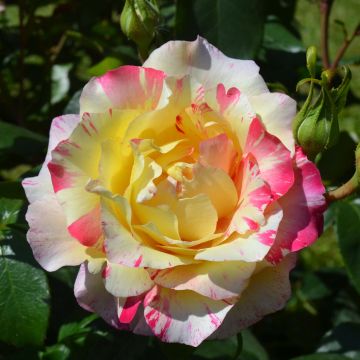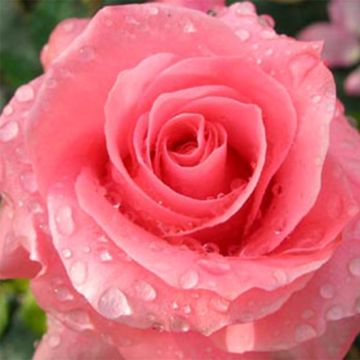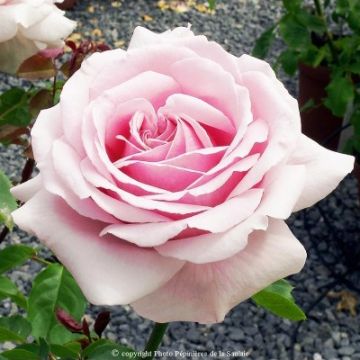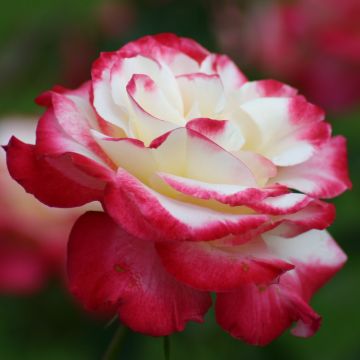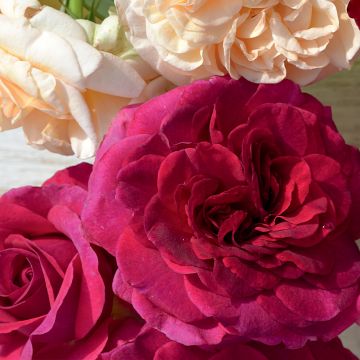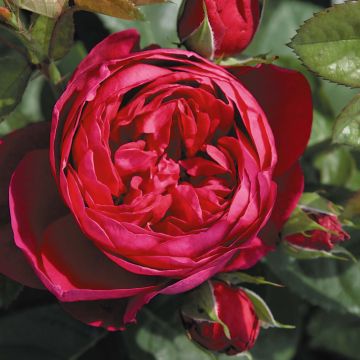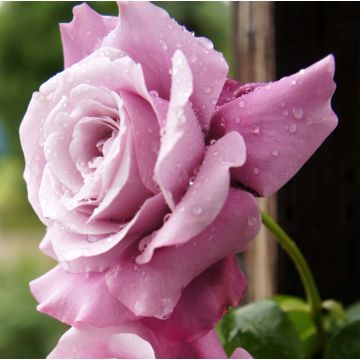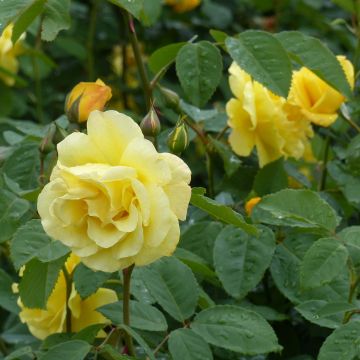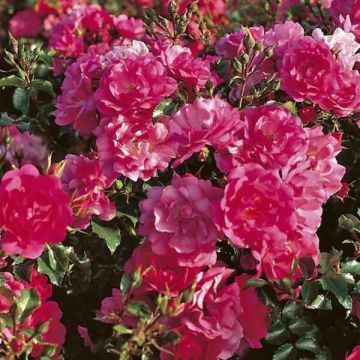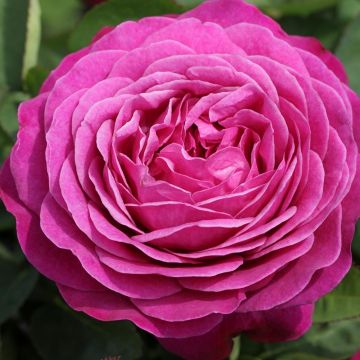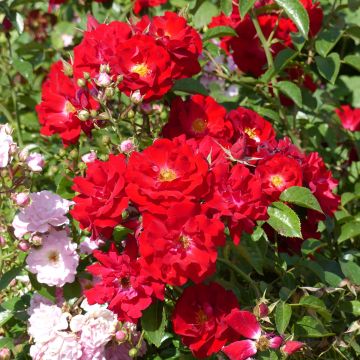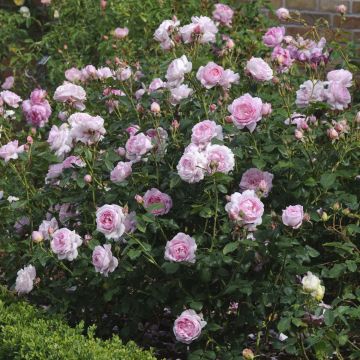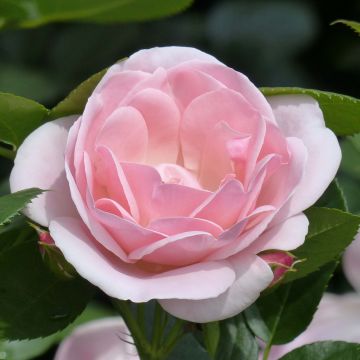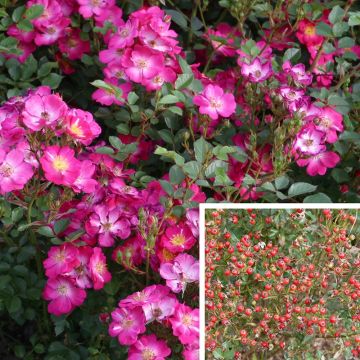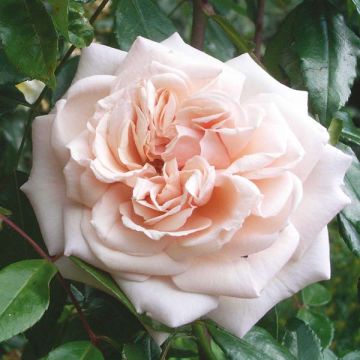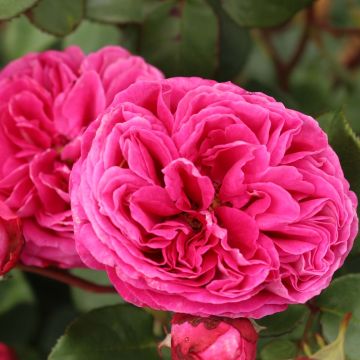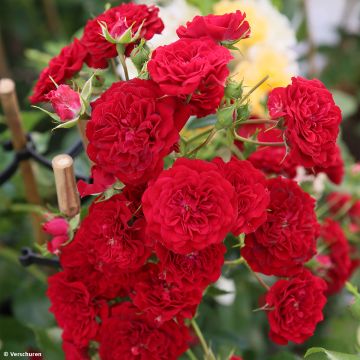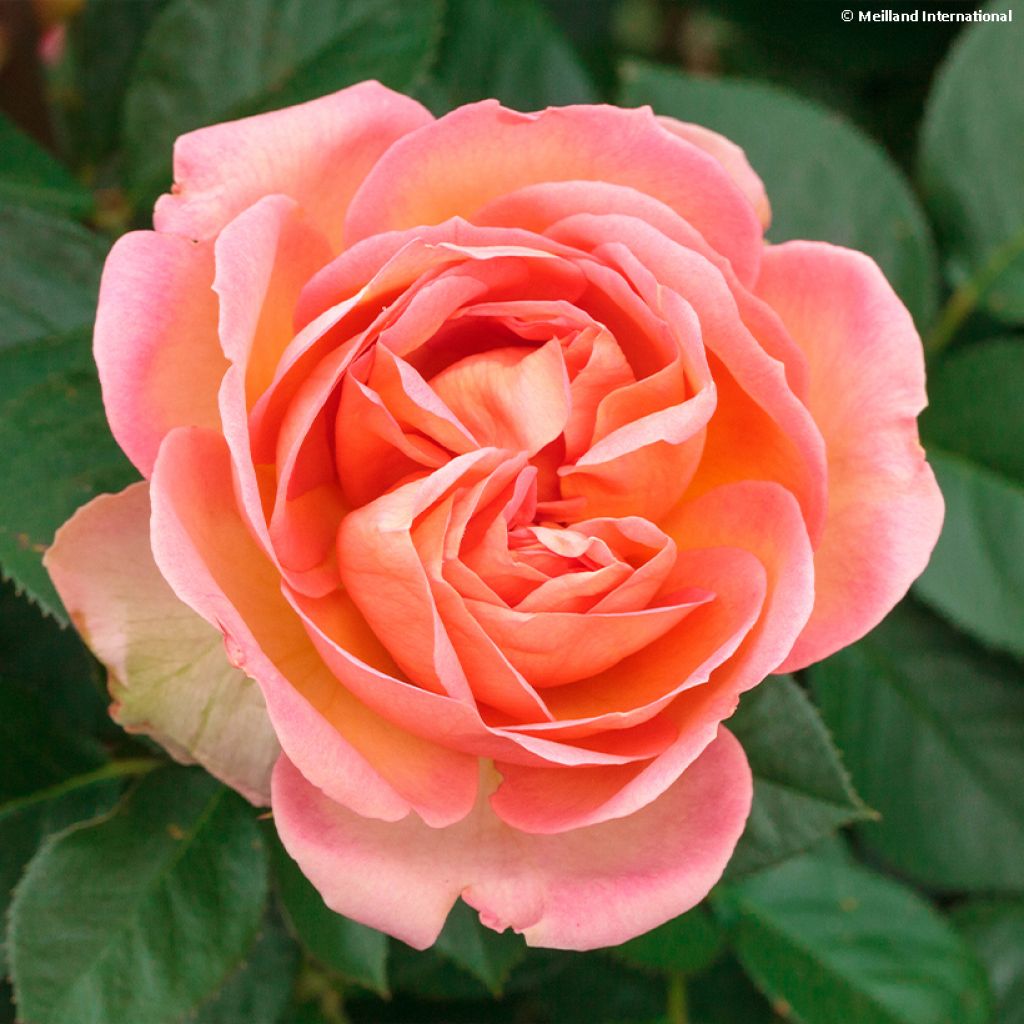

Rosier à grandes fleurs Auguste Escoffier Meizasmyne
Rosa Auguste Escoffier - Floribunda Rose
Rosa Auguste Escoffier® 'Meizasmyne'
Floribunda Rose
This item cannot be shipped to the selected country
Delivery charge from €5.90
Delivery charge from €5.90
Delivery charge from €5.90
Delivery to Corse prohibited
More information
Schedule delivery date,
and select date in basket
This plant carries a 24 months recovery warranty
More information
We guarantee the quality of our plants for a full growing cycle, and will replace at our expense any plant that fails to recover under normal climatic and planting conditions.
From €5.90 for pickup delivery and €6.90 for home delivery
Express home delivery from €8.90.
From €5.90 for pickup delivery and €6.90 for home delivery
Express home delivery from €8.90.
From €5.90 for pickup delivery and €6.90 for home delivery
Express home delivery from €8.90.
Delivery to Corse prohibited: UE law prohibits the import of this plant from mainland France to Corse as part of the fight against Xylella fastidiosa. Please accept our sincere apologies.
More information
Does this plant fit my garden?
Set up your Plantfit profile →
Description
The 'Auguste Escoffier' Rose, dedicated to the most famous chef of his time, is a truly exceptional Meilland variety. Combining the charm of old-fashioned roses with the floribundity of modern roses, it offers beautiful roses that evoke the colour and sweet almond scent of the most famous creation of Auguste Escoffier: the peach melba. The bush is very healthy and its vegetation is well balanced, offering an abundance of flowers until late autumn. Its excellent disease resistance and compact habit make it a versatile rose that thrives in all regions, both in the garden and in a large pot. And its flowers are perfect in romantic bouquets.
The 'Auguste Escoffier' Rose is a floribunda bush rose with large clustered flowers, introduced in 2020 by the rose breeder Meilland. This creation won the 1st Prize of Horticultural Students in Lyon in 2018 and the Grand Prix SNHF (National Horticultural Society of France) in 2021. With a bushy and harmonious habit, it reaches an average height of 90 cm (35in) and a spread of 50 cm (20in) at maturity, with rapid growth. It produces strong, thorny branches that bear beautiful foliage divided into large toothed leaflets of a semi-matte medium green. This foliage is slightly tinged with bronze-red on the young shoots. Throughout the summer, and until October if faded flowers are removed, the plant produces waves of 8 cm (3in) flowers, clustered in small bouquets of 2 to 5 units, with a quartered old-fashioned shape. They are composed of about forty petals that evolve from peach-orange to apricot and raspberry-pink, surrounding a golden heart. Together, they create a beautiful gradient throughout the plant. Their fragrance is light. The deciduous foliage persists on the plant until late in the season, but is absent in winter.
The 'Auguste Escoffier' rose is superb in mass plantings, in groups of 5 specimens, in large monochrome borders, or in combination with white or orange roses. It also blends well with light shrubs, perennials, and annuals such as delphiniums, campanulas, paniculate phlox, or tall foxgloves. It can be effectively showcased in front of a boxwood or yew hedge, or alternatively surrounded by a miniature hedge or a carefully designed maze, as in Italian or French gardens. At its base, one can plant a herbaceous clematis with blue flowers, such as Clematis heracleifolia, or a Sollya heterophylla in milder climates. This variety also adapts very well to being grown in a large pot for ornamenting terraces and balconies. Finally, its roses are stunning in bouquets, combined with lilies and hydrangeas in summer or with asters in autumn.
Report an error about the product description
Rosa Auguste Escoffier - Floribunda Rose in pictures
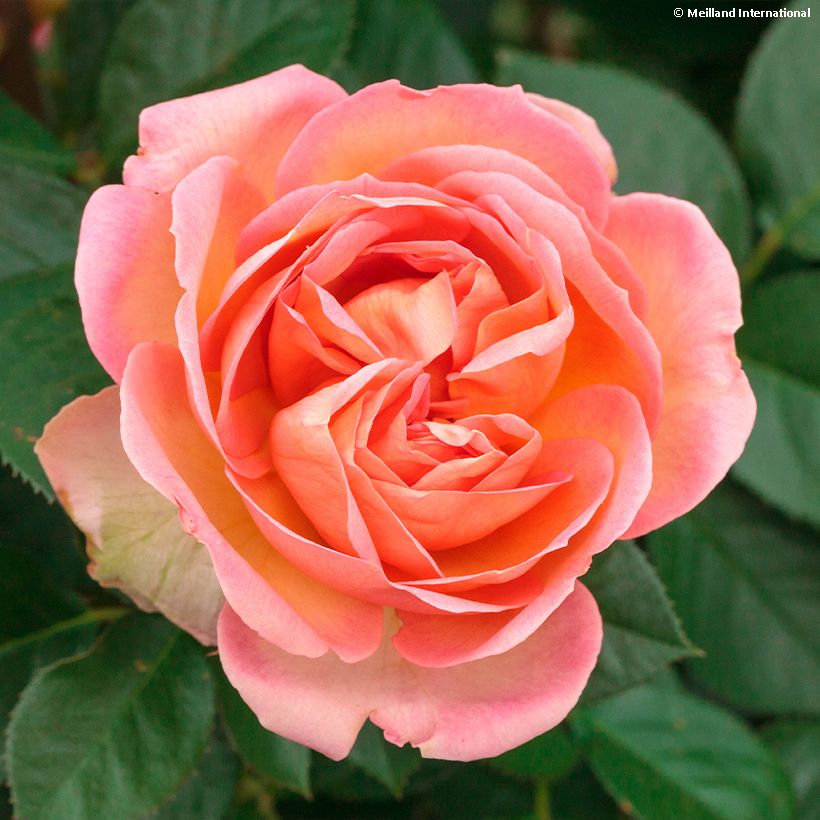

Plant habit
Flowering
Foliage
Botanical data
Rosa
Auguste Escoffier® 'Meizasmyne'
Rosaceae
Floribunda Rose
Cultivar or hybrid
Other Large-flower tea Roses
Planting and care
To plant your 'Auguste Escoffier' rose, work the soil to a depth of 25 cm (10in), crumble the soil well and place a base amendment such as dried blood or dehydrated horn at the bottom of the planting hole. Position your plant, freed from its pot, covering the top of the root ball with 3 cm (1in) of soil. Fill in the hole and water thoroughly to eliminate air pockets. In dry weather, it is necessary to water regularly for a few weeks to facilitate root growth. Also, remember to provide your rose with special rose fertiliser that stimulates plant flowering.
Planting period
Intended location
Care
-
, onOrder confirmed
Reply from on Promesse de fleurs
Roses by purpose
Haven't found what you were looking for?
Hardiness is the lowest winter temperature a plant can endure without suffering serious damage or even dying. However, hardiness is affected by location (a sheltered area, such as a patio), protection (winter cover) and soil type (hardiness is improved by well-drained soil).

Photo Sharing Terms & Conditions
In order to encourage gardeners to interact and share their experiences, Promesse de fleurs offers various media enabling content to be uploaded onto its Site - in particular via the ‘Photo sharing’ module.
The User agrees to refrain from:
- Posting any content that is illegal, prejudicial, insulting, racist, inciteful to hatred, revisionist, contrary to public decency, that infringes on privacy or on the privacy rights of third parties, in particular the publicity rights of persons and goods, intellectual property rights, or the right to privacy.
- Submitting content on behalf of a third party;
- Impersonate the identity of a third party and/or publish any personal information about a third party;
In general, the User undertakes to refrain from any unethical behaviour.
All Content (in particular text, comments, files, images, photos, videos, creative works, etc.), which may be subject to property or intellectual property rights, image or other private rights, shall remain the property of the User, subject to the limited rights granted by the terms of the licence granted by Promesse de fleurs as stated below. Users are at liberty to publish or not to publish such Content on the Site, notably via the ‘Photo Sharing’ facility, and accept that this Content shall be made public and freely accessible, notably on the Internet.
Users further acknowledge, undertake to have ,and guarantee that they hold all necessary rights and permissions to publish such material on the Site, in particular with regard to the legislation in force pertaining to any privacy, property, intellectual property, image, or contractual rights, or rights of any other nature. By publishing such Content on the Site, Users acknowledge accepting full liability as publishers of the Content within the meaning of the law, and grant Promesse de fleurs, free of charge, an inclusive, worldwide licence for the said Content for the entire duration of its publication, including all reproduction, representation, up/downloading, displaying, performing, transmission, and storage rights.
Users also grant permission for their name to be linked to the Content and accept that this link may not always be made available.
By engaging in posting material, Users consent to their Content becoming automatically accessible on the Internet, in particular on other sites and/or blogs and/or web pages of the Promesse de fleurs site, including in particular social pages and the Promesse de fleurs catalogue.
Users may secure the removal of entrusted content free of charge by issuing a simple request via our contact form.
The flowering period indicated on our website applies to countries and regions located in USDA zone 8 (France, the United Kingdom, Ireland, the Netherlands, etc.)
It will vary according to where you live:
- In zones 9 to 10 (Italy, Spain, Greece, etc.), flowering will occur about 2 to 4 weeks earlier.
- In zones 6 to 7 (Germany, Poland, Slovenia, and lower mountainous regions), flowering will be delayed by 2 to 3 weeks.
- In zone 5 (Central Europe, Scandinavia), blooming will be delayed by 3 to 5 weeks.
In temperate climates, pruning of spring-flowering shrubs (forsythia, spireas, etc.) should be done just after flowering.
Pruning of summer-flowering shrubs (Indian Lilac, Perovskia, etc.) can be done in winter or spring.
In cold regions as well as with frost-sensitive plants, avoid pruning too early when severe frosts may still occur.
The planting period indicated on our website applies to countries and regions located in USDA zone 8 (France, United Kingdom, Ireland, Netherlands).
It will vary according to where you live:
- In Mediterranean zones (Marseille, Madrid, Milan, etc.), autumn and winter are the best planting periods.
- In continental zones (Strasbourg, Munich, Vienna, etc.), delay planting by 2 to 3 weeks in spring and bring it forward by 2 to 4 weeks in autumn.
- In mountainous regions (the Alps, Pyrenees, Carpathians, etc.), it is best to plant in late spring (May-June) or late summer (August-September).
The harvesting period indicated on our website applies to countries and regions in USDA zone 8 (France, England, Ireland, the Netherlands).
In colder areas (Scandinavia, Poland, Austria...) fruit and vegetable harvests are likely to be delayed by 3-4 weeks.
In warmer areas (Italy, Spain, Greece, etc.), harvesting will probably take place earlier, depending on weather conditions.
The sowing periods indicated on our website apply to countries and regions within USDA Zone 8 (France, UK, Ireland, Netherlands).
In colder areas (Scandinavia, Poland, Austria...), delay any outdoor sowing by 3-4 weeks, or sow under glass.
In warmer climes (Italy, Spain, Greece, etc.), bring outdoor sowing forward by a few weeks.

































